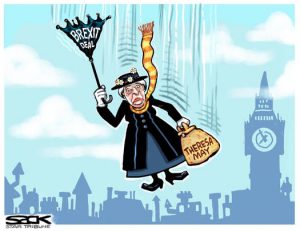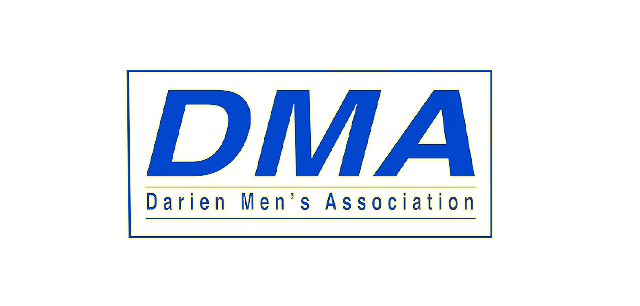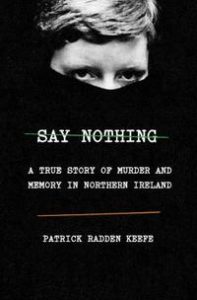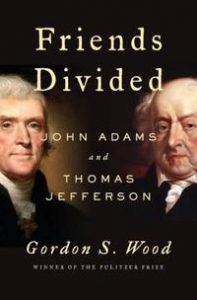Discussion leader: Bryan Hooper

Opening Notes:
BREXIT: Why should we care?
At a seminar I attended in the UK many years ago each participant was asked to consider the future of their industry or professional group. When it was his turn to make his forecast, a lawyer stood up and declared that “the legal profession has no future, but it has a long and glorious past stretching in front of it.” Some might say the same about the United Kingdom of Great Britain and Northern Ireland as it wrestles with the problems created by the vote in June, 2016, to exit the European Union.
To help answer the question in the title above it might be helpful to have an understanding of some of the history of the UK, the development of the EU, and how the UK came to be in its current situation – if the situation ever becomes clear, that is.
- The United Kingdom (UK)
Great Britain was created by the English annexing Wales in 1535 and 1542 and forming a union with Scotland in 1707. The kingdom of Ireland was added in 1801, and Northern Ireland was formed in 1922 when what became Eire seceded from the kingdom and established an independent country. The combination of Great Britain and Northern Ireland is the United Kingdom. All four countries elect members to the UK parliament that sits in Westminster, London, and, in addition, Wales, Scotland and Northern Ireland each has a separate devolved parliament. The total population of the UK is 66 million, with England at 55.6, Scotland 5.4, Wales 3.1 and Northern Ireland 1.9 million. Gross domestic product of the UK is the fifth largest in the world at an estimated $2.8 trillion in 2018 out of a world total of $84.8 trillion. To put this in perspective, the US GDP was $20.5, China $13.5, Japan $5.1 and Germany $4.0 trillion.
- The European Union (EU)
It is ironic in today’s discombobulated Brexit climate that in 1946 Winston Churchill, a Conservative statesman, was one of the early advocates of a United States of Europe. The EU traces its origin to the formation of the European Coal and Steel Community created during the recovery from World War II by the Treaty of Paris in 1951. The subsequent Treaty of Rome in 1957 led to the establishment of the European Economic Community comprising six countries: West Germany, France, Italy and the Benelux nations. The UK eventually joined the EEC in 1973 having been rebuffed initially by the French in 1963.
In 1975 the UK held its first ever nationwide referendum, and it concerned staying in the EEC. The government recommended the UK should remain in the group, and the electorate voted 67% in favor on a 64% turnout. In 1993 the Maastricht Treaty came into effect for the 12 countries of the EEC. That treaty established the EU together with European citizenship, it ensured the free movement of people, goods, services and capital within the market, and enabled the enaction of legislation covering justice, home affairs and trade policies. It also laid the foundation for the common currency, the euro: the EU now has 28 member countries and 19 of them use the euro. The population of the EU is 513 million and GDP in 2018 was estimated at $18.8 trillion, approximately 22% of the world’s GDP, compared with the US share of 24%.
- The Brexit Referendum
(a) The political timeline
David Cameron, leader of the Conservative Party, won an unexpected victory over the Labour Party in the UK general election in 2010. The Conservatives did not, however, gain sufficient votes to form a clear majority and they allied with the Liberal Democratic Party to form a coalition government with Cameron as Prime Minister.
-2-
Animosity in the UK toward the EU had gradually increased since the terms of the Maastricht Treaty were enforced in 1993, and the Treaty of Lisbon exacerbated the situation when it was implemented in December, 2009. This gave increasing power to the EU parliament and also fueled the anti-immigrant feelings in the UK which had been developing and strengthening as the EU expanded its number of member countries and assigned more power to the European Parliament in Brussels. During and after the world financial crisis in 2008 the resentment intensified with many in the UK objecting to immigrants taking away jobs from the UK population and some allegedly living off the UK by taking advantage of social welfare handouts. Further dislike of the EU was fostered by the crisis in the Eurozone creating economic uncertainty, and the rise of terrorism that was also blamed on immigrant factions. Pressure built up to fix the UK economy and react to the growing power arrogated by the EU.
Cameron called a general election in 2015 during which he promised another referendum on staying in the EU. The conservatives won enough seats this time to form a majority government (over 326) without the assistance of another party. In the table below are shown the seats won in 2015 compared with 2010 and also the percentage of the vote won by the main parties:
|
Party
|
Members of
Parliament
|
Share of MPs
(%)
|
Share of Votes
(%)
|
|
|
2010 2015
|
2010 2015
|
2010 2015
|
|
Conservative
|
306 330
|
47.1 50.8
|
36.1 36.8
|
|
Labour
|
258 232
|
39.7 35.7
|
29.0 30.4
|
|
Scottish National
|
6 56
|
0.9 8.6
|
1.7 4.7
|
|
Liberal Democrats
|
57 8
|
8.8 1.2
|
23.0 7.9
|
|
Democratic Unionist
|
8 8
|
1.2 1.2
|
0.6 0.6
|
|
UK Independence
|
0 1
|
0.0 0.2
|
3.1 12.6
|
|
Speaker
|
1 1
|
0.2 0.2
|
0.2 0.2
|
|
Other
|
14 14
|
2.1 2.1
|
6.3 6.8
|
|
Total
|
650 650
|
100.0 100.0
|
100.0 100.0
|
Note in 2015 the growth of the Scottish National Party (SNP), the decline of the Liberal Democrats, and the share of the vote won by the UK Independence Party (UKIP):
- The electorate in Scotland had rejected separating from the UK in a referendum held in September, 2014, voting 55% to stay, with a very high turnout of 85%. However, the whole process of the independence plebiscite stirred nationalist sentiment and that carried over to the UK general election in 2015 as the SNP won 56 of the 59 available seats in Scotland.
- The Liberal Democrats paid the price for being in coalition with the Conservative Party in the last government, losing 49 of the 57 seats they held previously.
- The Democrat Unionist Party (DUP) retained 8 of the 18 seats available in Northern Ireland.
- Labour won 25 of 40 seats in Wales.
- The Conservative Party took 316 of 533 seats in England.
- In 2014 UKIP candidates took 27% of the vote in the UK for the European Parliament, ending up with 24 out of the 73 seats assigned to the UK, and greater than the seats won by either of the two major UK parties. In the 2015 UK general election UKIP picked up only one seat, but their 13% share of the total vote was a signal of what was to come in 2016.
-3-
(b) The fateful vote
Prime Minister David Cameron and his government passed the Enabling Act in February, 2016, authorizing the referendum to be held for remaining or leaving the EU, and announced the date of June 23, 2016, for it to occur.
The government threw its support behind the Remain camp, but Cameron allowed Conservative Party members of parliament (MPs) and members of his Cabinet to make their own decisions on which side to support. Seven cabinet members joined the Leave faction. Boris Johnson, former Mayor of London and an MP, plus Michael Gove, Secretary of State for Justice, together with UKIP leader, Nigel Farage, spearheaded the Leave side. Arguments for Remain were that the UK would risk prosperity, jeopardize national security, lose jobs, delay investment in the UK, and lose influence in world affairs if they left. The Leave group argued that the EU had a deficit of democracy, it undermined national sovereignty and prevented the UK from making better trade deals. Leaving would give control of immigration back to the UK and save billions of pounds in membership fees. The Leave group appeared to take better advantage of social media than the Remain team, spreading the memes that emphasized the potential danger of immigration from Turkey if it became a member, and also trumpeting that leaving the EU would free up £350 million a week ($24 billion annually) to be spent on the UK National Health Service. Neither of these messages were countered effectively by the Remain side.
The results of the referendum surprised everyone – to say the least. The overall vote in the UK to leave the EU was 52% versus 48% to remain, and the turnout was 72% of the electorate (compared with a 64% turnout in 1975 when 67% to remain in the EEC). On a country basis, England voted to leave by 53.4%, and Wales at 52.5% also voted to leave. In England only Greater London voted to remain, while all other regions opted to leave. Scotland at 62.0% and Northern Ireland at 55.8% voted to remain in the EU.
Prime Minister Cameron announced his resignation the next day and Theresa May, the Home Secretary, took over on July 13, 2016. May was one of the ministers who had supported the Remain campaign. On March 29, 2017, the UK government invoked Article 50 of the Treaty on European Union to leave the EU by March 29, 2019, and so began the process of planning and negotiating terms of the withdrawal.
(c) The 2017 election
On April 18, 2017, Theresa May called for a general election in order to strengthen her hand in negotiations with the EU, and set the date for June 8th. Strong support for her government diminished considerably by the time the election occurred, and the Conservative Party lost 13 seats. They ended up 9 short of an overall majority, but continued in power as a minority government with the backing of the 10 votes of the DUP from Northern Ireland.
|
Party
|
Members of
Parliament
|
|
|
2015 2017
|
|
Conservative
|
330 317
|
|
Labour
|
232 262
|
|
Scottish National
|
56 35
|
|
Liberal Democrats
|
8 12
|
|
Democratic Unionist
|
8 10
|
|
UK Independence
|
1 0
|
|
Speaker
|
1 1
|
|
Other
|
14 13
|
|
Total
|
650 650
|
-4-
(d) The draft agreement and the options
May then proceeded to negotiate with the EU with a view to avoid permanent membership of the single market or the customs union and to repeal membership of the EU. In July 2018, the PM’s cabinet agreed to the Chequers plan which outlined the proposals made by the UK government, and in November, 2018, the draft Agreement on the Withdrawal of the United Kingdom from the European Union as developed between the UK and EU was published – all 585 pages.
The proposal allows for the UK to transition out of the EU over the period March 29, 2019 to December 31, 2020. In the interim, it will remain in the customs union, continue to pay into the EU budget and apply EU laws while negotiating further with the EU on new trade deals. The UK will have no representation in making decisions in the EU during the transition. In case no agreement is reached by the end of 2020 there is a backstop agreement that says the UK will remain in a customs union with the EU, thus avoiding the necessity of setting up a hard border with customs checks between Northern Ireland and Eire, which would avert a potential conflict in this previously troubled area. This part of the agreement is difficult for Brexit supporters to accept. They have consistently argued that Britain must be able to exit any UK customs union with the EU as and when it wants so as to be able to pursue free-trade deals around the world. The DUP objects to the backstop since it treats Northern Ireland differently from the rest of the UK and could promote a renewal of talk and action on reunification of Ireland and leaving the UK.
The draft agreement was submitted by the UK government for approval to parliament on January 15, 2019, and went down to defeat by 432 votes to 202, an extraordinary and record margin of 230 for a government loss. Nonetheless, the Prime Minister survived a vote of no confidence the next day by 19 votes. Non-binding amendments were then approved by parliament on January 29 that rejected a no-deal Brexit and authorized the Prime Minister to return for talks with the EU to alter the Irish backstop to allow for alternative arrangements.
The EU negotiators have already stated there will be no changes made to the draft agreement, but meetings are continuing, and Prime Minister May will present revised proposals to parliament later in February.
(e) What will happen?
There are several possibilities:
- The chaotic solution nobody wants is that a hard Brexit occurs on 3/29/19 with no agreement in place.
- The UK and EU come to a new arrangement over the Irish backstop, and a more amicable divorce is agreed between the two participants.
- The UK decides to have another referendum if parliament votes for it. Additionally, Scotland has the right to vote for independence in a second referendum once Brexit terms are decided, and might subsequently apply for membership of the EU.
- The decision is deferred for a few months, although that could create problems since there are elections in May for the EU parliament and the UK theoretically would still have to vote to fill their EU seats.
- Why should we care?
An open question, and one for discussion at our meeting on February 21, 2019.
To get everyone started on their reading of the subject of Brexit I would suggest the article on the Conversation website: https://theconversation.com/whats-the-deal-or-no-deal-with-brexit-heres-everything-explained-110024
Another excellent source is the BBC news website: https://www.bbc.com/news
to find “All you need to know about Brexit.” Enter Brexit in the search box to see a summary of the situation and links to give you greater insight into several subjects.
For those of you interested in delving into more background go into Wikipedia and search for the individual articles on the United Kingdom, the European Union, and Brexit. More data regarding the EU can be found on their website, Europa.eu
The Malign Incompetence of the British Ruling Class
https://www.nytimes.com/2019/01/17/opinion/sunday/brexit-ireland-empire.html













